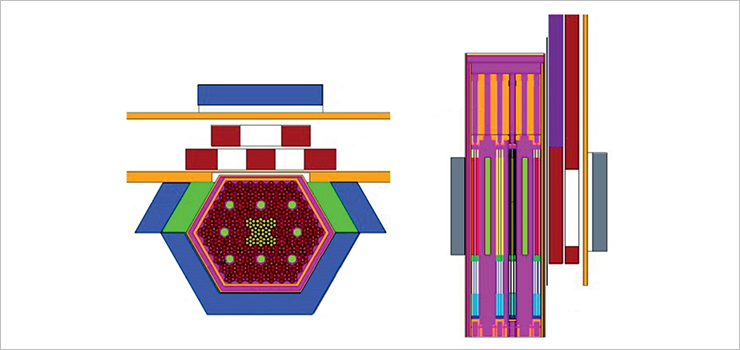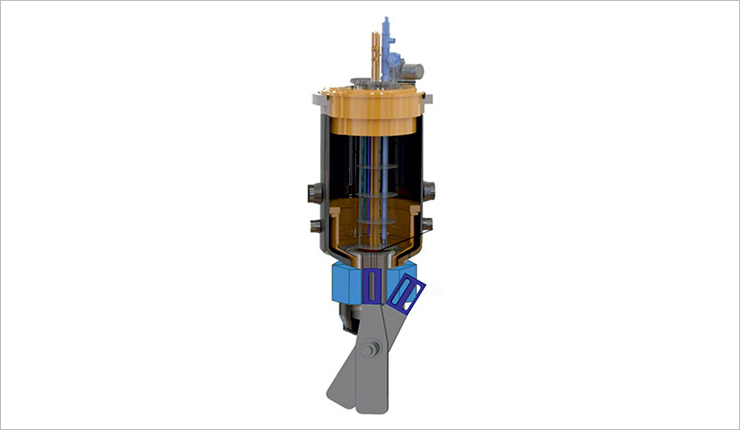Preliminary computations for promising JINR Pulsed Reactor made
News, 25 April 2024
We offer to your attention a preprint “Preliminary Computations for the Pulsed Reactor IBR-4. Basic Composition” P13-2024-7, issued by the JINR Publishing Department. The authors are Yuri Pepelyshev, Alexander Vinogradov, Anatoly Rogov (FLNP JINR), Davaasuren Sumkhuu (FLNP JINR, the Institute of Physics and Technology of the Mongolian Academy of Sciences, Ulaanbaatar). It is expected that new source will be more stable than the previous one, and will provide the higher density of the thermal neutron flux.
By the end of the 2030s, the IBR-2M Reactor will be decommissioned. The authors suggested that after the decommissioning of the reactor, they should not create an absolutely new neutron source, which would require significant development work, but use positive technical solutions tested at other fast neutron nuclear facilities, for example, IBR-2, IBR-2M, MBIR, BOR-60, BN-1200, and others. This is a conceptual vision of a new source, called IBR-4. Special attention in the IBR-4 was devoted to the issues of stable reactor dynamics. The article is based on calculations for the so-called basic composition of the IBR-4, which considers the fundamental possibility of implementing positive technical solutions. As part of future works, the IBR-4 core and its immediate environment — all that makes it possible to increase the density of the thermal neutron flux on the extracted neutron beams and at the same time fully ensure the reliability and safety of the reactor — will be considered based on the basic composition. This IBR-4 concept allows for the implementation of the neutron source at minimum cost compared to other options.
 The IBR-4 core in different projections
The IBR-4 core in different projections
It is expected that the parameters of the IBR-4 will be significantly higher than the parameters of the IBR-2M. The oscillatory instability is significantly reduced compared to the IBR-2M. Therefore, the duration of the fuel campaign and the safety of the reactor have been increased. At a power of 5 MW, the density of the thermal neutron flux on the surface of the IBR-4 water moderators is 1,76·1013 cm −2/с−1, which is 3.5 times higher compared to the IBR-2M.
Further research of the authors will be dedicated to increasing the density of the thermal neutron flux on the extracted neutron beams of the future reactor.
